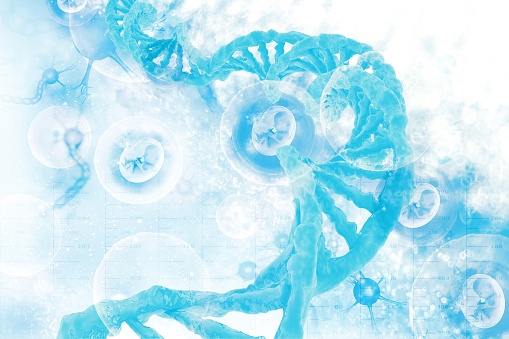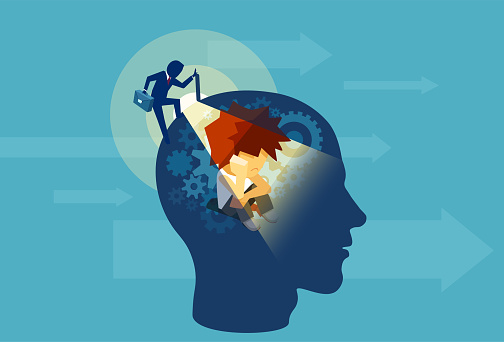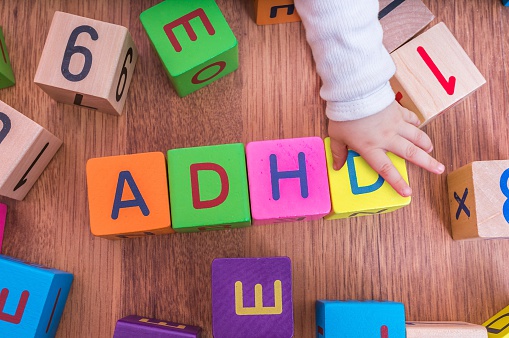Do you have a hyperactive child at home? How to distinguish hyperactivity from ADHD?

Attention Deficit Hyperactivity Disorder translates to the loss or absence of attention caused by a hyperactive disorder. But does every "hyperactive child" suffer from this syndrome? How do you know if your child has ADHD?
Article content
Various psychiatric disorders associated with childhood have been studied for many years. In the 1960s, they were collectively referred to as mild cerebral encephalopathies.
From 1962 onwards, the name mild cerebral dysfunction was used and is still used today by many psychiatrists, despite the newer classification in the International Classification of Diseases.
ADHD is a relatively new term that came into public awareness in 1992. However, this attention deficit disorder characterised by impulsivity and hyperactivity, belonging to the subcategory of mild brain dysfunction, has only become popular in recent years.
As recently as the early 20th century, it was still considered by many to be a disorder of education and morality.
Mild brain dysfunction also includes a wide range of other disorders, such as speech and language development disorders, specific developmental learning and school skills disorders, motor development disorders, mixed specific developmental disorders, pervasive developmental disorders such as autism and Asperger's syndrome, and other and unspecified psychiatric developmental disorders.

What does the English acronym ADHD stand for?
ADHD (Attention Deficit Hyperactivity Disorder) is a hyperkinetic, neurodevelopmental disorder that belongs to the mild brain dysfunctions. According to the International Classification of Diseases, it falls under the area of child psychiatric disorders.
Although it is a childhood disorder that manifests no later than the seventh year of life, its symptomatology persists into adulthood.
This English acronym encompasses attention deficit disorder, increased activity (hyperactivity) and excessive impulsivity in a child. These are the three pillars on which a definitive diagnosis can be considered and made.
When should you start thinking about your child having ADHD?
A child's development and learning involves many moments when you need to be patient and give your full attention. A child's curiosity about everything around them is a normal occurrence and a physiological process as part of their learning, acquiring new information and experiences.
Sometimes a parent is at the end of his or her rope and the child is always interested in something. That's when many of them will say to themselves that the child is hyperactive. Attention! Hyperactive maybe, but not all hyperactivity immediately means ADHD. When is it necessary to think about ADHD?
Attention deficit hyperactivity disorder

Attention Deficit Hyperactivity Disorder is the mainstay of an ADHD diagnosis. It manifests as a failure to concentrate and focus on certain tasks at home or school.
For example, if a child starts to concentrate, it doesn't last long. He or she struggles to maintain attention for a long enough period of time.
It is the same with activities that he starts but usually does not finish.
Typically, the child avoids tackling more complex and demanding tasks, especially at school. Instead, he plays or engages in other activities.
He does not concentrate, does not listen and does not do what is required of him. Especially in the school period, this makes him irresponsible, distracted and lazy. Mood and control disorders are common.
He leaves a mess behind and forgets his homework. As a result, he does not achieve as well as his peers at school.
Hyperactivity

Hyperactivity manifests itself on a psychological level (increased mental activity) and on a physical level (increased motor activity). Attention deficit hyperactivity disorder is closely related to hyperactivity on a psychological basis.
The child cannot stand to listen to authority or anyone else. But his mind is racing with a thousand other thoughts about a thousand other things, such as other activities and his favourite pastimes.
He transforms his thoughts into speech, which we observe outwardly as polyspeak and constant interruptions.
Motor hyperactivity is at the forefront, as it is most observable to those around him. It manifests itself in restlessness, the child's inability to stay in one place. He is constantly moving, even in situations where it is socially rude.
Keeping calm is possible for a certain period of time with the right direction, but very difficult for the child.
Increased impulsivity

Attention deficit hyperactivity disorder and hyperactivity itself is accompanied by increased impulsivity, which makes the outward appearance of being very cheeky. Children with ADHD are not only verbose, but more importantly, they talk when it is inappropriate.
They blurt out a sentence without thinking about it until they find out later what they said.
But they don't make a big deal of it. Often they won't let another person finish and jump into other people's speech, often into their actions.
This is the result of their impatience and inability to wait for something. They are defiant, volatile and have trouble fitting in. This is the reason for the various degrees of aggression.
The unquestionable triad
The symptoms do not go unnoticed by both the parent and the school teacher. The behaviour of children with ADHD is very marked. Most parents understand very well the pathology of their child's behaviour, even though they are lay people.
In the past, such children were often beaten or sent to reformatories. The incorrigibility was also attributed by experts to poor upbringing, morals or poor socio-economic background. But today we know that some speech, attention or behavioural disorders are not the fault of your child or you.
Children with ADHD and other disorders can be worked with to some extent. There are special school facilities where educators are trained to work specifically with children with various disorders.

Why does ADHD occur? Can this disorder be prevented?
For most disorders, we encounter the concept of prevention, i.e. preventing the onset of the disease. This is done through a healthy lifestyle and efforts to eliminate risk factors.
With ADHD, the notion of prevention can be a bit of a contradiction in terms. This is because prevention doesn't exist no matter what you do. Why is that?
ADHD is caused overwhelmingly by causes that we cannot control. Thus, we cannot prevent the onset of the disorder. What little we can control does not guarantee that the disorder will not arise due to, for example, a genetic factor.
What are the causes of attention deficit disorder?
There is not just one cause of ADHD. In some cases, the etiopathogenesis may not even be identified, it can only be assumed.
Nevertheless, regardless of the cause, the disorder has the same symptoms and the same impact on social life. This may not be significant, but there are still some problems associated with the disorder.
Uncontrollable genetic predispositions

Genetics plays a key role in the development of this disorder, as in many other disorders.
Up to 30% of ADHD cases are attributed to hereditary factors, rising to a staggering 80% in monozygotic twins.
The genes for the dopamine receptor DAT1, D2, D4 and many others are involved in the development of ADHD.
These genetic disorders are not made up, but are scientifically confirmed and substantiated.
Interesting fact: In some literature you may come across the term ADHD-like behavior, which is more familiar to psychologists. This term names a behavior similar to ADHD, but caused by external environmental influences. It has no genetic basis, which is why it is an easily reversible and treatable condition in the treatment process.
Current risks during intrauterine development

During its intrauterine development, the fetus takes from the mother and father genetic predispositions that are uncontrollable.
However, its nine-month development can also be affected by external influences from the mother.
By this term we mean everything that positively but mainly negatively influences and disturbs its growth inside the tummy. The baby can do nothing about this, so the basic assumption of its healthy development belongs to the mother.
She should try to live as healthily as possible so that her existing ailments do not cause problems for the baby. By ailments we mean an unhealthy lifestyle, smoking, alcohol, drugs, stress, accidents and others.
Infections cause damage that can be detected later

A common seasonal infection is usually not serious and most people "get over it", so to speak. However, in pregnant women, even the common flu can be a problem.
It doesn't mean that getting sick during pregnancy automatically leads to harm to the baby. But there are certain prerequisites.
The risk of damage to the fetus increases with the severity of the infection. Among the riskiest diseases in pregnancy are toxoplasmosis, diseases caused by herpes viruses, Zika virus with subsequent microcephaly, diseases caused by meningococcal bacteria and various others with different effects on the fetus.
Pregnant women should try to avoid contact with sick people altogether (especially serious diseases with proven effects on intrauterine fetal development) and should not expose themselves to the risk of exotic infections by travelling to risky countries.
Despite advances, unknown aetiology is still a familiar concept
Not in every case is the actual cause of attention deficit disorder identified. Often doctors speculate as to what might have caused it, collect anamnestic data, perform genetic testing and identify the most likely risk factor as the cause.
Often you will find in the medical report that the etiopathogenesis is unclear. The reason is a negative result of genetic testing and indeed a large number of other presumed factors for the disease, but the true etiology remains undiscovered.

When does a child's increased activity border on a disorder?
Excessive activity is not enough to suspect that your child has ADHD. Children go through a stage of learning and recognizing people, things and situations around them during their development.
It's perfectly normal for them to want to see, grab and be everywhere. So, excessive childhood playfulness and curiosity is a physiological phenomenon. That a child can stay active longer than parents is quite common.
Only a physician can make a diagnosis of ADHD. This is done by taking anamnestic data from the child's relatives, usually the parents, interviewing them and also the patient, assessing risk factors, the presence of the basic triad of symptoms and, of course, genetic testing. The child's behaviour is monitored over a prolonged period of time in parallel with a series of sessions with a psychiatrist.
Is it just increased activity or is it more of a disorder?

Although ADHD is one of the attention disorders, hyperactivity is at the forefront of all the symptoms. This borders on morbidity if it is excessive and constant.
The child is restless, cannot sit in one place for long enough, is constantly fidgeting, moving around. When he sits, there is marked motor restlessness (constantly playing with his hands, kicking his chair).
We consider it normal for motor restlessness to be sporadic and not constant. Everyone, adult and child alike, has a bad day. For some reason, nervousness, anxiety or fear (fear of a test, teacher, classmate) may occur.
This may manifest itself in transient psychomotor restlessness. This is temporary, subsiding after the underlying problem has been resolved.
Another attribute is attention deficit disorder.
The fact that the child does not pay attention for a long enough time to something uninteresting or unentertaining can not be considered a pathology.
However, if he or she cannot concentrate on any activity, does everything in very short periods of time, and this period persists for a long time, caution should be exercised. For a child with attention deficit disorder, talking in class is also a distraction.
The triad is completed by impulsivity, which shapes the overall picture of ADHD. Apart from the lack of concentration, inattention and constant movement, it is the increased impulsivity that gives it all a cheeky undertone.
The child is disruptive, disrespectful of authority (parent, teacher). He makes nothing of reprimands and often comments on them. He often jumps into speech.
The presence of these three distinctive and unmistakable signs means that something is wrong. If you still try to reprimand and direct the child, but your efforts are futile in the long term, you need to seek professional help.
Interesting: In the literature you may also come across the acronym ADD (Attention Deficit Disorder). This is a relatively new name for Attention Deficit Hyperactivity Disorder.
ADHD in adulthood
ADHD does not arise in adulthood! A diagnosis of ADHD in adulthood means that the disorder existed after the birth of a particular individual. It just went unnoticed for many years.
A few years back, no one was concerned with this disorder to the extent that they are today. The symptoms of ADHD were considered to be defects in upbringing and morals.
For this reason, adolescents were often sent to reformatories. Adults were wrongly considered oddballs and simply rude and incorrigible people with poor morals, often considered stupid. Even now, there are those who criticize.
Differences in adults with ADHD compared to healthy people

In an adult, the diagnosis of ADHD is usually arrived at by chance.
The difficulties caused by the disorder can escalate over a lifetime and become gradually unmanageable. The ill person then often seeks help on their own.
These people come to a psychologist or psychiatrist with common difficulties such as problems in relationships, at work or in social interaction with other people.
The symptoms of ADHD are similar in children and adults. At some points they differ due to age:
- Inattention and inattention persist, which can cause problems at work.
- In an adult, poor work organization, irresponsibility, and general lack of clarity are at the forefront.
- Comorbid depression is common, appearing as early as adolescence and carried into adulthood by young people.
- Emotional instability is also encountered. These disorders tend to cause misunderstandings and frequent conflicts with other people.
- The culmination is usually predeliction, the consequences of which are dealt with in the abstinence from alcohol and other substances.
If left untreated into adulthood, ADHD can cause the disorder:
- Frequent job changes, conflicts with co-workers and supervisors, and even loss of employment.
- Disruption of interpersonal relationships, loss of friends and acquaintances
- Partner and marital discord, break-ups and divorce
- Problems with raising own children, child clinging to other parent, loss of parent-child relationship
- Depression leading to substance abuse, other psychiatric illnesses and suicidal tendencies
Interesting resources










